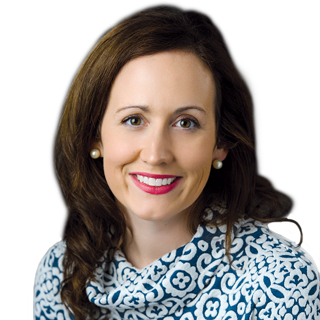
Back to school! Thank goodness it is finally that time of year again.
As part of preparation I always ask the kids to clean out their backpacks, which often results in some interesting finds.
The summer math workbooks we were supposed to complete.
End-of-year gifts from teachers such as books still in their wrapping paper.
A 3-month-old banana. Yuck!
And best of all, notes and homework papers from the prior year.
One such treasure I found underneath Isaac’s bed last week included a “Center Time Note” from early fall of 2017.
The center activity was cutting and the materials were noted to be scissors and yarn.
The teacher’s observations and summary of events were as follows (verbatim):
“Isaac loves to cut with scissors, I watched him cut yarn for a couple of minutes before I asked, what are you going to do with all of these pieces? He replied, nothing. I just want to cut.
“Pieces were all over the floor and table.
“I suggested gluing the pieces to paper.
“He suggested throwing them away.
“I said that he was wasting the yarn.
“He got upset when I said he could no longer cut without a plan.
“I gave him paper to cut but he decided to leave cutting.”
I now have this note posted beside our family calendar as a reminder that our schedules run much smoother with a plan.
Sound familiar?
With all the buzz, excitement, and, need I say, even moments of panic around the final rule and clarifications for the Patient Driven Payment Model (PDPM), we as an industry need to remain purposeful in our planning.
No cutting without a plan.
Before you look to deconstruct, rebuild or modernize your practices, let’s remember a couple of key things.
1. The foundational definitions for accessing the post-acute care benefit under Medicare Part A in a skilled nursing facility remain the same.
We all know them, but they are below as a refresher:
° The patient requires skilled nursing services or skilled rehabilitation services, i.e., services that must be performed by or under the supervision of professional or technical personnel (see §§30.2 – 30.4); are ordered by a physician and the services are rendered for a condition for which the patient received inpatient hospital services or for a condition that arose while receiving care in a SNF for a condition for which he received inpatient hospital services;
° The patient requires these skilled services on a daily basis (see §30.6); and
° As a practical matter, considering economy and efficiency, the daily skilled services can be provided only on an inpatient basis in a SNF. (See §30.7.)
° The services delivered are reasonable and necessary for the treatment of a patient’s illness or injury, i.e., are consistent with the nature and severity of the individual’s illness or injury, the individual’s particular medical needs, and accepted standards of medical practice. The services also must be reasonable in terms of duration and quantity.
2. CMS clarified in the final rule areas it will continue to monitor to ensure compliance with and effectiveness of the updated model.
These areas include the following:
° Changes in payment that result from changes in the coding or classification of SNF patients vs. actual changes in case mix.
° Changes in the volume and intensity of therapy services provided to SNF residents under PDPM compared to RUG-IV.
° Compliance with the group and concurrent therapy limit.
° Any increases in the use of mechanically altered diet among the SNF population that may suggest that beneficiaries are being prescribed such a diet based on facility financial considerations, rather than for clinical need.° Any potential consequences (e.g., overutilization) of using cognitive impairment as a payment classifier in the SLP component.
° Facilities whose beneficiaries experience inappropriate early discharge or provision of fewer services (e.g., due to the variable per-diem adjustment).
° Stroke and trauma patients, as well as those with chronic conditions, to identify any adverse trends from application of the variable per-diem adjustment.
° Use of the interrupted-stay policy to identify SNFs whose residents experience frequent readmission, particularly facilities where the readmissions occur just outside the 3-day window used as part of the interrupted-stay policy.
In closing, while I hate to be cliché … Is it true that all we need to know in life we learn in kindergarten?
In this example, I would say yes.
Change is coming, positive changes for us as providers, and for the individuals we serve.
No need to throw all our pieces away, or walk away from the table when we are presented with new options.
When asked, “What are you going to do with all of those pieces?”
How will you respond?
Renee Kinder, MS, CCC-SLP, RAC-CT, is Director of Clinical Education for Encore! Rehabilitation Services and is the Silver Award winner in the 2018 American Society of Business Publishing Editors competition for the Upper Midwest Region in the Service/How To Blogs category. Additionally, she serves as Gerontology Professional Development Manager for the American Speech Language Hearing Association’s (ASHA) gerontology special interest group, is a member of the University of Kentucky College of Medicine community faculty, and is an advisor to the American Medical Association’s Relative Value Update Committee (RUC) Health Care Professionals Advisory Committee (HCPAC).





